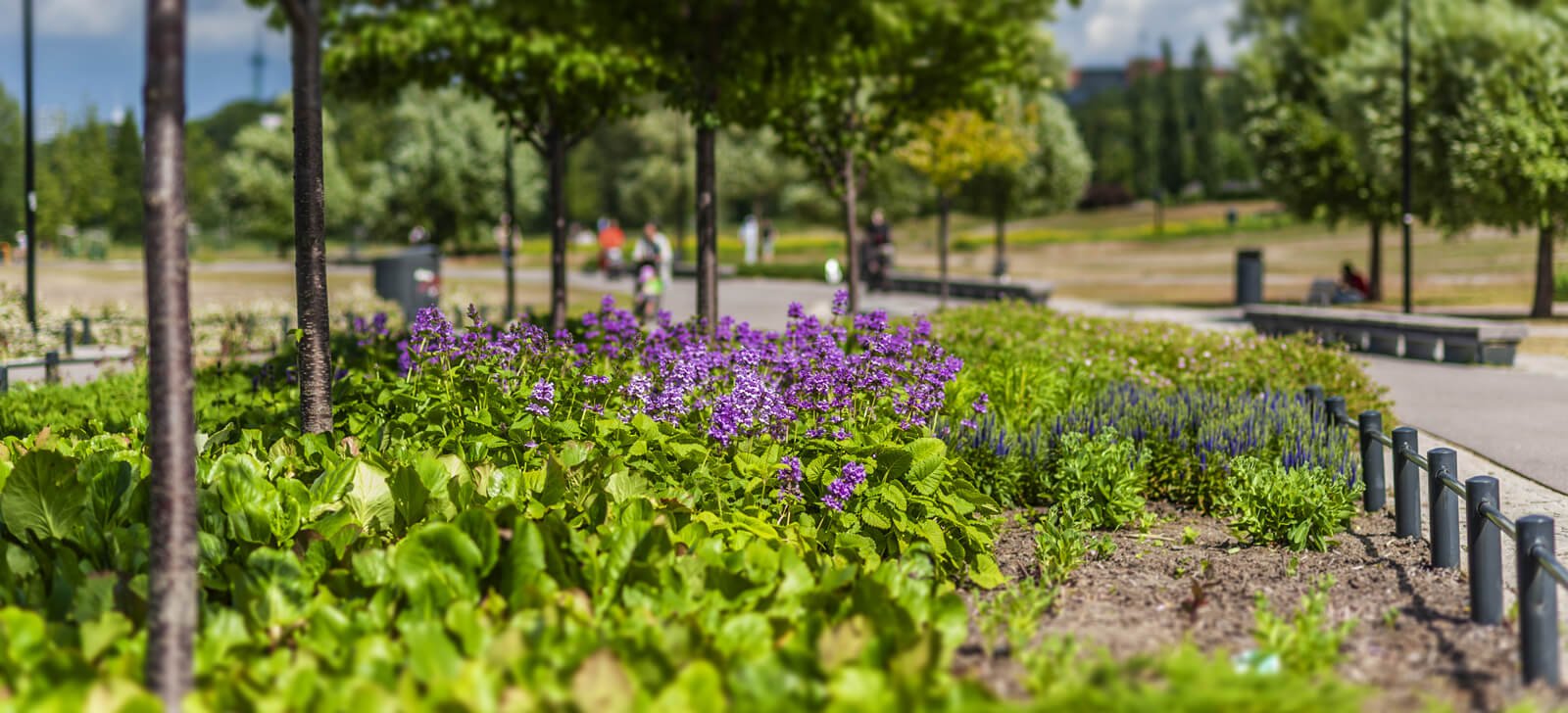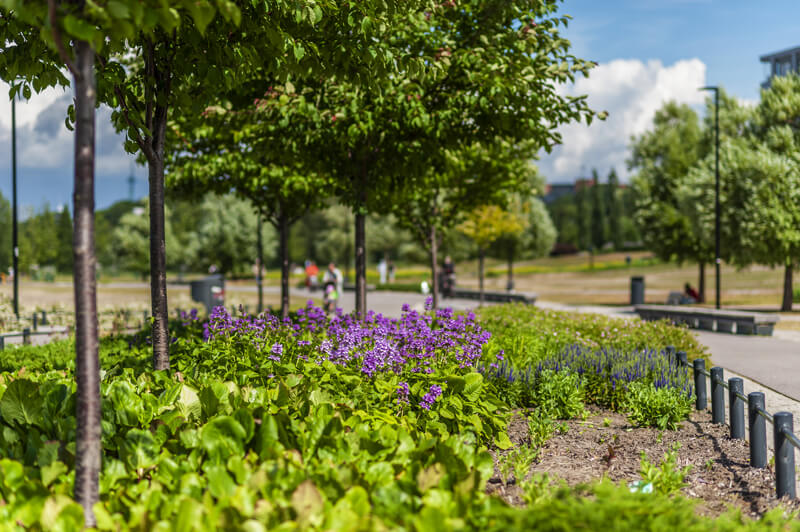History of the area
Back in the 19th century, there was a shallow bay named Kluuvinlahti in the current location of Töölönlahti Park. The construction of Finland’s first railway in 1862 (in Finnish) and the growth of the city resulted in the bay being filled with mixed materials and a rail yard being built in the area.
The Töölönlahti rail yard was in service in a key location of the city until the late 1980s, after which its functions were transferred to Pasila. The last element to leave the area was a loading dock for express car trains, and it was not dismantled until 2012.
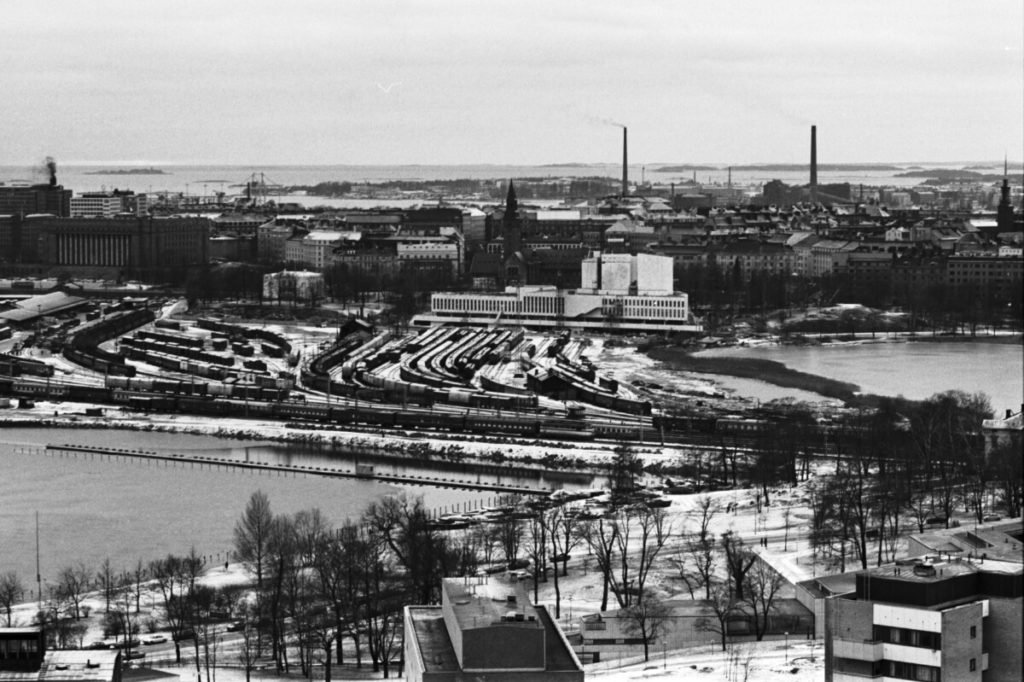
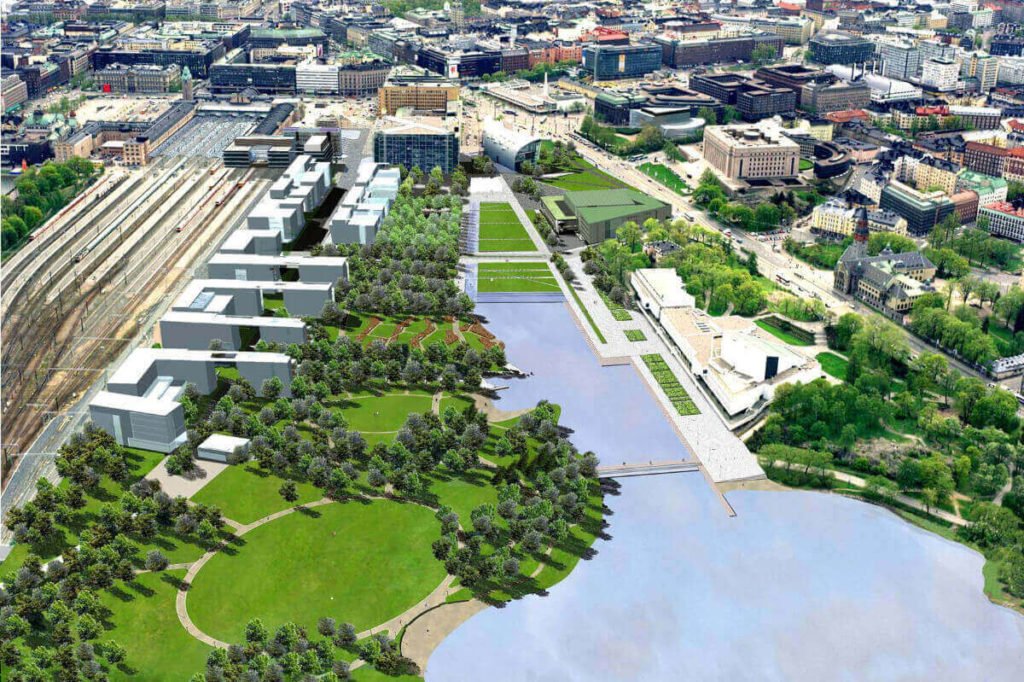
A competition for something that never came to be
In 1997, the City held an international design competition for Töölönlahti Park, which was won by the proposal submitted by Finnish architects Hannu Tikka and Kimmo Lintula. The detailed plan for the area and further plans for the park have been based on the winning competition entry.
The most dominant element of the park competition winner was a broad and diverse range of water elements. A large, channel-like water pool was placed in front of Finlandia Hall, connected to smaller transverse “cascades.” A row of office and residential buildings facing the park was placed at the rail yard side edge with a series of diverse theme gardens placed west of the buildings.
Of all the features of the detailed plan completed in 2004, the block areas located by the railway were implemented, but realising the park plan drawn up based on the detailed plan with its extensive water elements turned out to be too expensive due to the poor soil quality of the area and the prevalent economic situation. As such, the winning park plan was ultimately left unimplemented. Instead, it was decided that a “temporary” park would be built in the location.
A challenging construction site
The construction of the park began in 2014, and the opening ceremony was held in the early summer of 2016. Due to mixed landfill materials in the soil, the area was highly unsuitable for construction. There was a great risk of depressions occurring, and plenty of contaminated soil materials were found in the area. In the northern part of the park, construction was also made difficult by pressurised groundwater flowing quite close to the ground surface.
Subgrade reinforcement measures, such as deep stabilisation or the installation of pile slabs, are very expensive to carry out. Because of this, the park was designed in a way that required no subgrade reinforcements. The more built sections, such as the pocket gardens on the eastern side of the park and the pavements of the event area, are located on sturdier ground. The pocket gardens are located on a pile slab built around the block areas. The entire park was landscaped in a manner that avoids major depression risks.
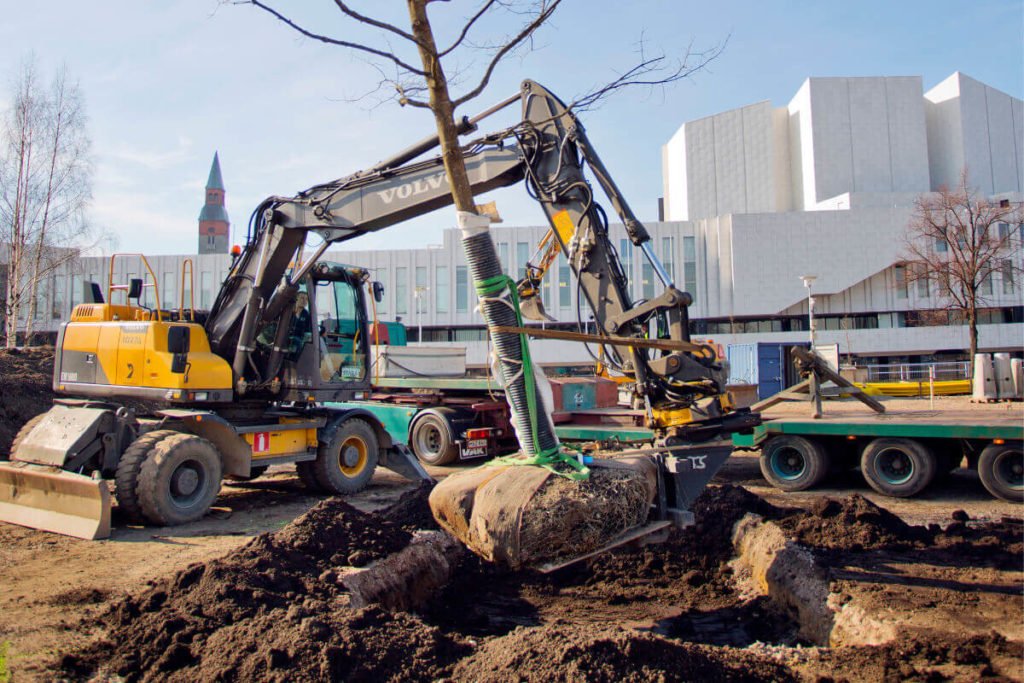

Large trees and diverse vegetation
Some of the tree plantings of the park were carried out with exceptionally large saplings. All in all, some 40 extra-large saplings were planted. Additionally, large trees were transferred to the northern end of the park from the Central Library Oodi construction site. The trunk circumference of the largest trees planted was 80–100 cm, whereas the commonly used size is 12–20 cm. The trees were transferred from the City of Helsinki’s nursery in the late winter of 2015. They were transported to their destination one at a time on a truck carriage. In the park, a machine was used to lift and place the arriving trees in their planting pits, while another machine was used for filling in the soil and underground support. Roughly 80% of the large trees survived the demanding transfer process thanks to measures such as plentiful watering.
There are 21 different tree species in the park, as well as shrubberies featuring 25 different shrub species and flowerbeds consisting of perennial plants and decorative grasses with a total of 32 different plant species. Thousands of flower bulbs were also planted in the park.
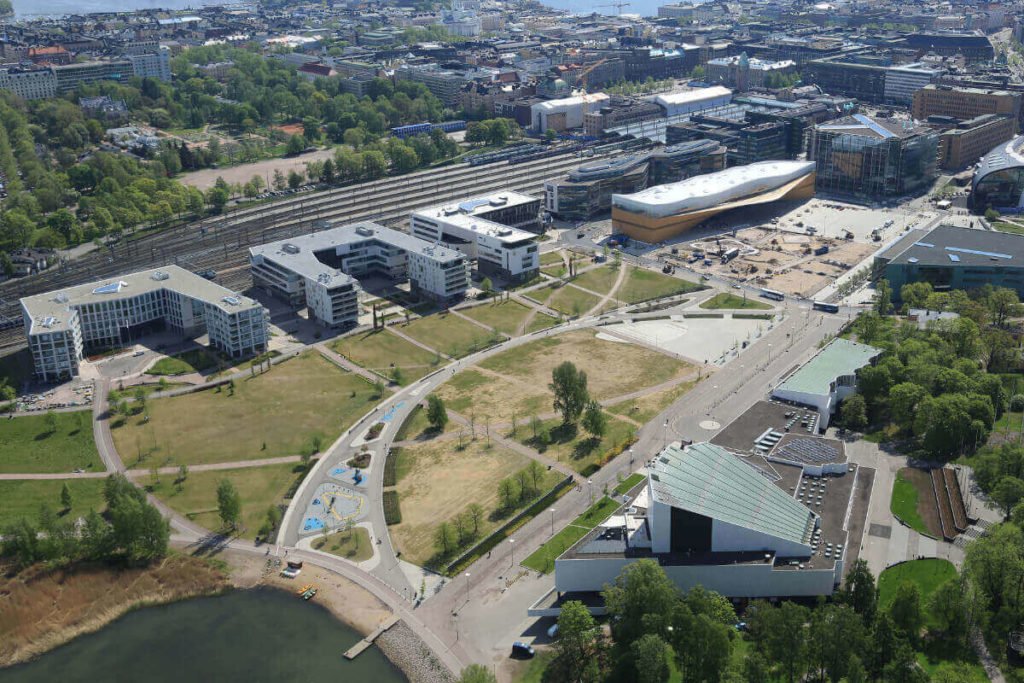
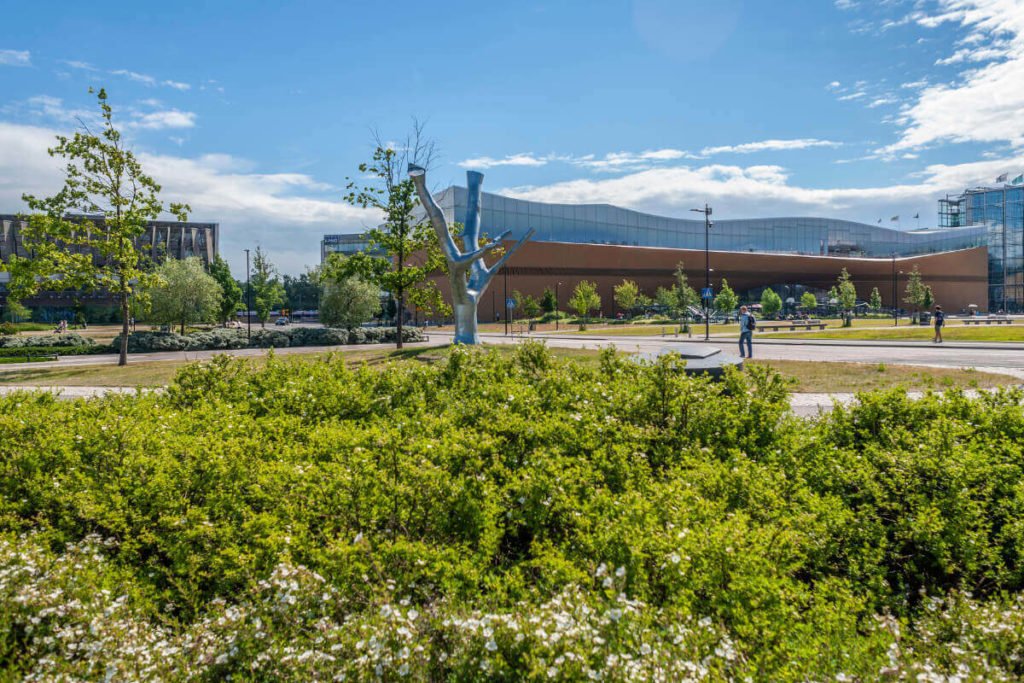
Activity arch and event activities
First and foremost, Töölönlahti Park is designed to serve as a leisure time setting for Helsinki residents. The park is built around an arching main corridor called an activity arch. It connects the entire park area and divides it into different sections from east to west. The western edge of the park is delimited by Finlandia Hall and the Karamzininranta street plaza with its popular cycling routes. There are three small pocket gardens on the eastern side by the Alvar Aallon katu blocks.
The activity arch features a popular playground, an exercise station and lounging areas. The exercise-oriented playground comprises a course-like jungle gym consisting of ropes and nets that inspires children to try out their climbing skills. There are also large climbing cubes around the jungle gym. The playground elements have a colourful safety bedding under them to soften falls. There are also a few exercise racks for adults by the playground, as well as benches for sitting.
The park can also take pride in having the longest park benches in Helsinki, located roughly in the middle of the park at the edge of the activity arch. The benches delimit the arch and provide seats facing the evening sun. Their combined length is 154 m. The bench seats are made of untreated, certified hardwood.
The environmental works of art along the activity arch feature graphical concrete slabs with old maps, aerial images and photographs of Töölönlahti.
As the park is in a central location near cultural institutions, the City has also prepared for having the park used as an event venue. The area reserved for events is delimited between the Finlandia Hall side of the park and the activity arch. During public events, the activity arch serves as a support area and an exit route.
For event use, the area features three electricity points, two of which are high-output and one slightly lower-output. In addition to them, the area features two electricity boxes for kiosk operations and one electricity box reserved by Finlandia Hall for its own events. The western side of the event area features connection wells for water and sewer connections used during events.
The lawns of the event area have an automatic watering system, the purpose of which is to keep the grass in better condition and help it recover faster from the stress caused by events. Despite plentiful watering, aeration and the use of precision nutrients, the lawn area has grown poorly. One reason for this is believed to be the flocks of barnacle geese using the lawns as their habitat. Plenty of different waste collection bins and deep bins for picnickers were installed in the park.
The Töölönlahdenkatu end of the activity arch features artist Antti Laitinen’s sculpture entitled Armour.
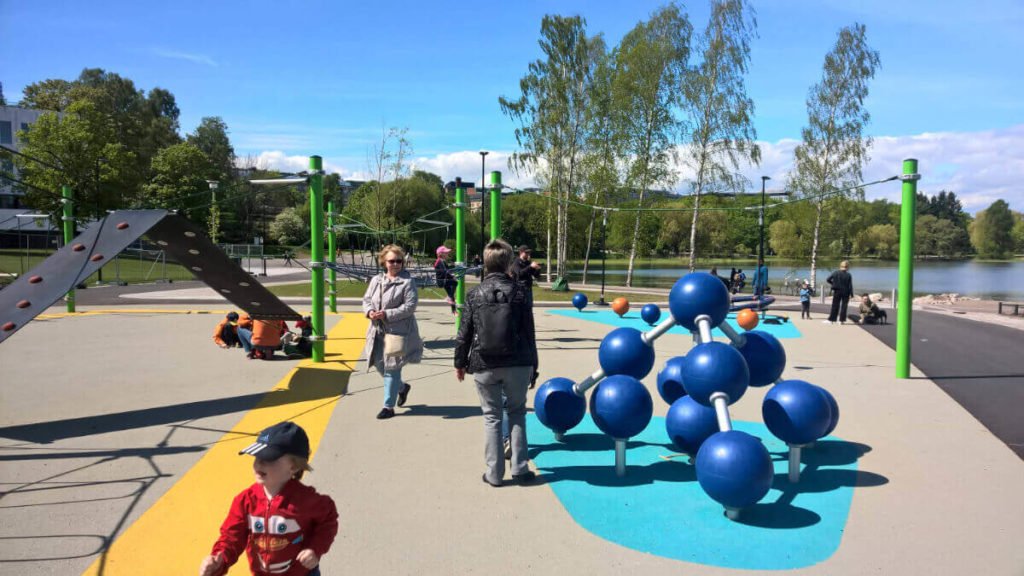
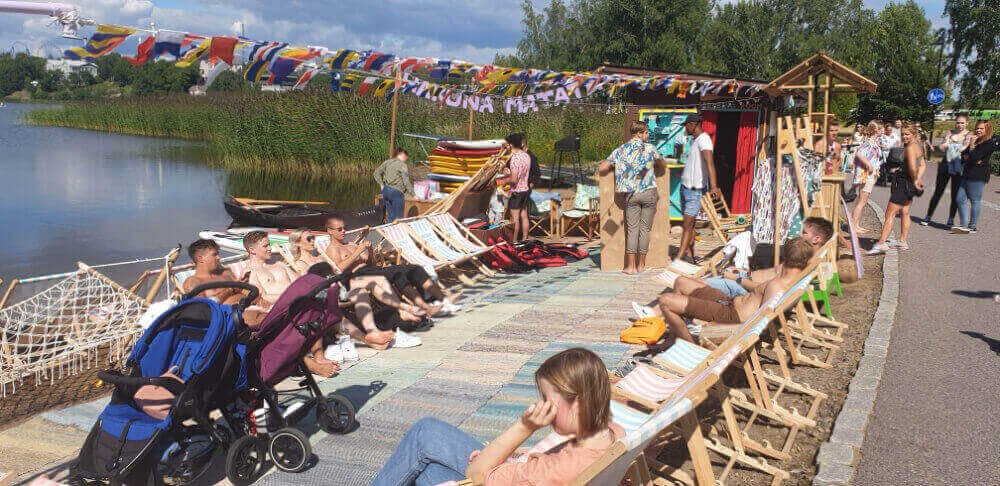
Beach and the water of Töölönlahti
In connection with the construction of the park, the shore strip at the southern end of Töölönlahti was also renovated. The shoreline used to be severely eroded and unpleasant-looking. The pavement on the shore acts as an erosion shield. There is a charming, small sandy beach next to the pavement. In addition to the beach, there is a sturdy floating pier to provide access to the water. Visitors can rent equipment for paddling, rowing or standup paddleboarding at the beach. By the water, visitors can admire waterfowl living on the bay, such as mallards, mute swans, European wigeons, great crested grebes, Canada and barnacle geese and Eurasian coots. On a beautiful summer day, the atmosphere at the beach feels like being abroad!
Industrial plants located in Hesperianpuisto in the 19th century polluted Töölönlahti severely, and the bottom of the bay still has sediment layers from those days. In late 2005, a project was carried out to direct water from Humallahti to Töölönlahti for the purpose of improving the water quality of the bay. In the open-water season, water has been directed from Humallahti at a rate of 500 litres per second, resulting in a considerable boost in the water turnover. The greatest effects of the water exchange were observed in the first years, as the levels of nutrients and algae in the water decreased considerably. After those first years, the water quality has remained at a level better than the baseline, with only minor changes. The water is currently suitable for swimming.

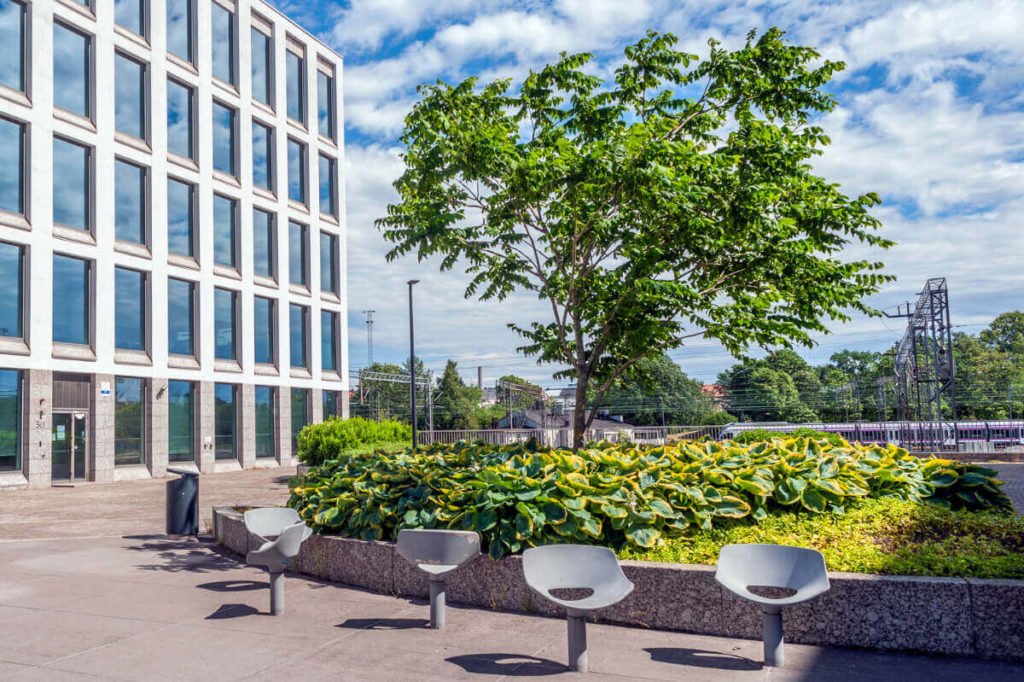
Pocket gardens
There are three pocket gardens, i.e. distinctive small park areas, located at the eastern edge of the park. They are delimited by the buildings along Alvar Aalto street but considered a public park area regardless. Each garden has a unique design that features a diverse range of decorative vegetation. The pocket gardens form a whole together with the two street plazas east of Alvar Aalto street.
Pocket Garden 1 is located on the Central Library Oodi side of the park. It features planting areas paved with natural stone slabs and delimited with kerbs and walls. The vegetation features species such as the Ornäs birch, the Sorbus ‘Dodong,’ bush honeysuckles and the Hosta ‘Undulata Albomarginata.’ The same design language is repeated on the other side of Alvar Aalto street.
Pocket Garden 2 is garden-like in its appearance, featuring diverse vegetation, such as a variety of perennial plants, and special spruce trees, such as a row of trees with a witches’ broom top. The garden has a view over the entire park in the direction of Finlandia Hall.
Pocket Garden 3 features a “floor” made from a combination of grey square stones and a cast concrete surface, and one impressively large tree, a Manchurian walnut tree. The same combination of stones and cast concrete is repeated on the other side of Alvar Aalto street.
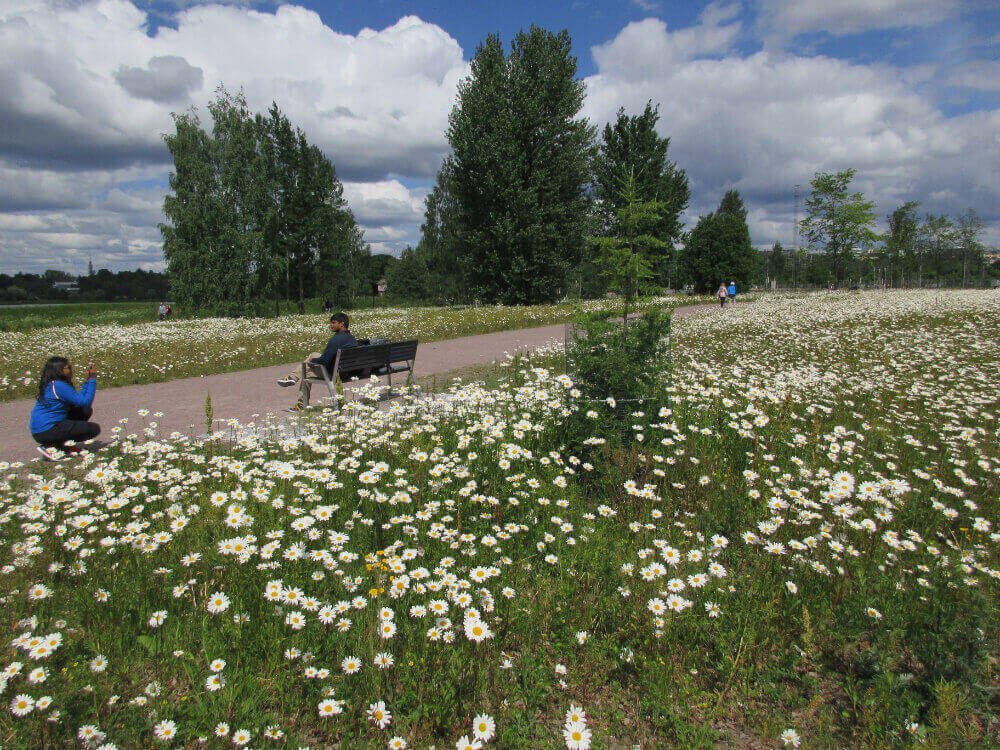
OmaStadi cherry trees and meadow
Based on a proposal submitted to and approved in the participatory budgeting system OmaStadi, 15 cherry trees will be planted in Töölönlahti Park in 2023. The trees will be placed at the apartment building side edge of the park in groups of three. The species featured are the Yoshino Cherry and the Accolade Flowering Cherry, which is a flore pleno species. A clover and grass lawn was sowed under the cherry trees for pollinators.
A proposal to turn lawns into meadows was submitted to OmaStadi in the second season. One of the sites listed is Töölönlahti Park. Two lawn sections at the end of the park on the southern side of Töölönlahti were selected as the planning area, as they form the most natural part of the park to begin with. The area already features a meadow, which will be expanded. The new meadow to be built will feature traditional Finnish flowering meadow plants that provide nourishment to insects, such as bumble bees, bees and other pollinators. The meadow will be built in the spring of 2023.

